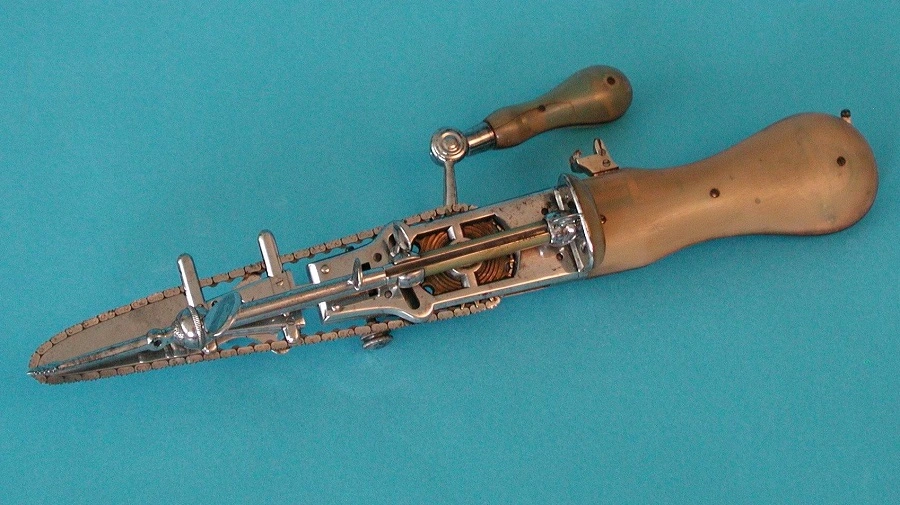When you see a chainsaw, what do you first think of? Wood, yes? And if you enjoy watching movies, you surely recall the James Wan Saw. Get ready for a surprise because this motorised device has a very unpleasant past. one that might both surprise and frighten you.
In the 18th century, chainsaws were developed to aid in difficult deliveries. You might be wondering how such a large gear can assist in bringing a toddler into the world. Let’s respond to that.

First, the original design was created by two Scottish doctors (James Jeffray and John Aitken) and was compact with two handles, requiring two people to operate it. Therefore, if a baby became stuck, two individuals would grasp it, place it on the pelvic bone, and tear it apart.
Knives weren’t a good option because they would take a very long time, and since anaesthetic wasn’t invented yet, that would imply hours of painful recovery. So, while not a calming option, a chainsaw would greatly speed up the procedure.
Later versions with a crank and handle were developed so one person could operate them. The use of chainsaws (also known as symphysiotomy) continued into some areas of the 19th century and was a popular technique for performing amputations.
Chainsaws were no longer used during childbirth as C-section instruments were developed over time (sigh of relief). However, the most recent motorised chainsaws used to fall trees and join wood have undergone substantial changes.
So sure, despite their horrifying beginnings, chainsaws were at least a useful technology at a time when there were no other options. Still consider this to be the most bizarre medical innovation? How about this: In 1965, George and Charlotte Blonsky created a human turntable that could spin someone so quickly that they would eventually give birth to a child due to centrifugal force. You did read that correctly.
Other strange medical devices
Other astounding discoveries that make you wonder how far some scientists are willing to go include: a rotating turntable, chainsaws used for infant birth, and the ability to fly.
Although it sounds like a tool for torture from the movies, electric shock underwear is not one. Every ten minutes, this invention administers a mild electric jolt. The shock increases blood flow, reducing the likelihood of bedsores, especially in patients confined to a bed.
Does your “Big Ben” constantly rise to the occasion and cause you discomfort? If so, you may need an anti-erection device. Your boomstick was to be attached with Alter Todd’s electric device, which would then gently shock the wearer back to normalcy. When someone developed an erection, the bell in it would ring.
You believed you had seen everything when it comes to The Death Defeater. Actually, not quite. A 1940 invention by Russian physician Sergei Brukhoneko would revive victims by supplying them with oxygen using pumps and chambers.
Sergei wasn’t quite productive because individuals continue to pass away and do not return from the afterlife. Surprisingly, the device proved helpful when he underwent heart surgery.
You know that little deep dimple that appears on some people’s faces and causes others to enviously stare at them? It is attainable—artificially, that is. A “dimple maker” surgical gadget may safely pierce your skin and leave behind that adorably little blemish.
The so-called “hand work machine” may not be exactly what you have in mind, but you are still in front of us, right? Let’s set the record straight first. The hand job machine, which most people refer to as that for lack of a better term, aids donors unable to extract sperm naturally.

Wrap up
This concludes our discussion of the history of the chainsaw and a few other odd medical discoveries. We sincerely hope you enjoyed this exciting ride. Friends, see you around. Toodles.













